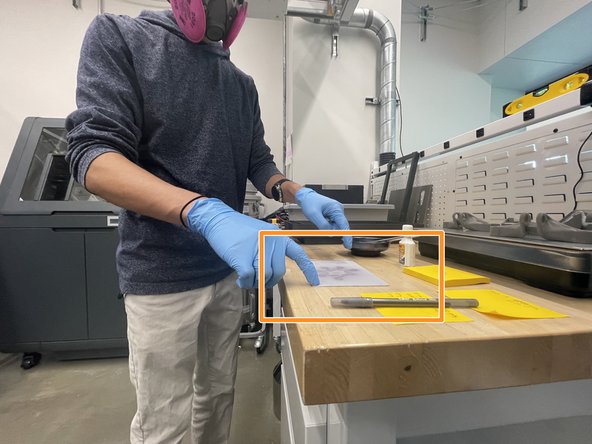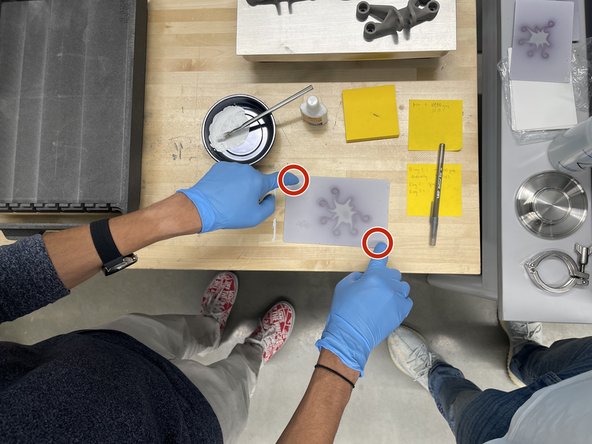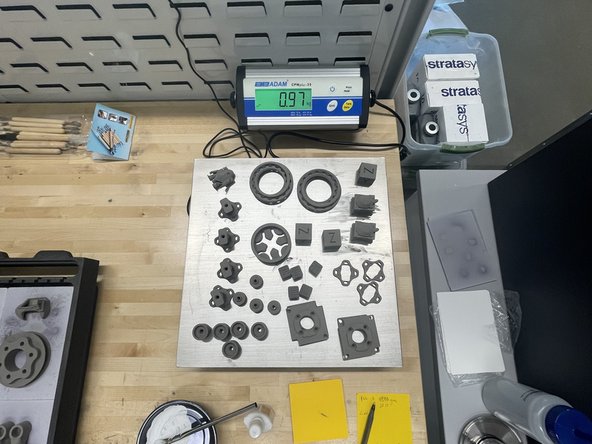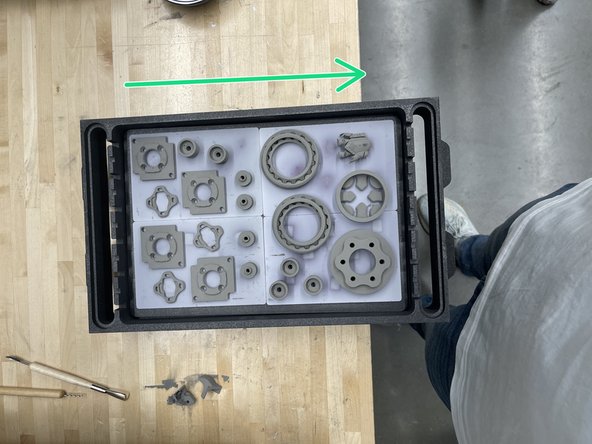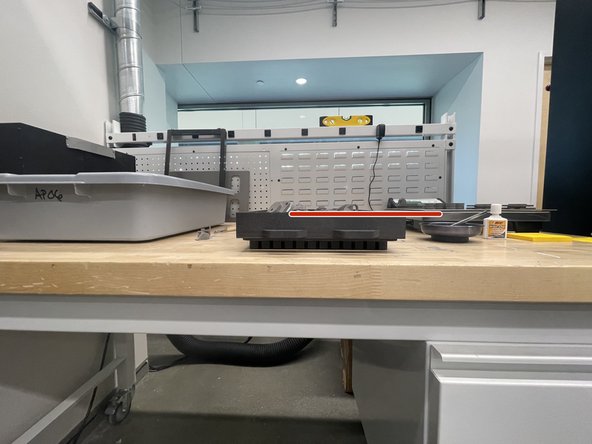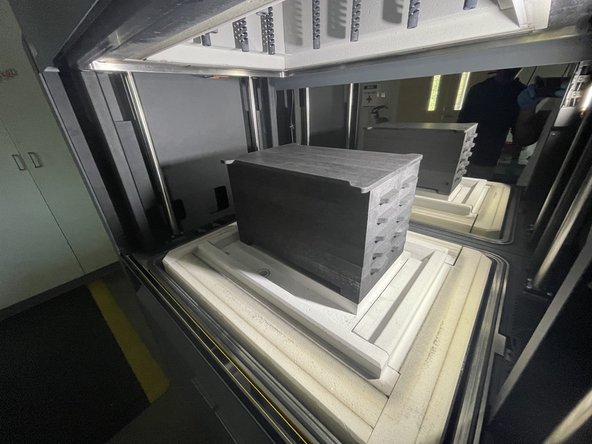Introduction
The sintering process takes parts from a “green” state to their final, fully solid metal forms. Preparing parts to sit in the graphite retort properly for the 40+ hours that they will be in the furnace is important to achieving good parts without damaging the (very expensive) graphite retort.
Images by: Terrapin Works
-
-
Before sintering, parts are in a "green" state and must be handled with care
-
Parts would fuse to the graphite retort without a layer of separation
-
Setter plates are made of ceramic and serve this purpose
-
Always maintain a 5-10mm margin to the boundaries of plates to minimize risk
-
All parts involved in this process are fragile, so take great care and patience
-
-
-
Clear a decent area on a powder processing worktable
-
Wipe down the area with DI water and dry thoroughly
-
Connect and power on a parts scale
-
Prepare to track object weights on a sticky note or similar
-
-
-
Retrieve a graphite retort ring
-
Inspect the retort ring for any solidified metals
-
Carefully set in a graphite base plate:
-
Place the retort ring over the edge of a table or tilt up the ring with one hand
-
Set one edge of the graphite base plate into the ring
-
While supporting the base plate, lower it into the ring gently
-
-
-
Retrieve setter plates - 4 per base plate
-
Setter plates are also fragile, handle with care
-
Check setter plates for warping
-
Setter plates can be reused but also can warp - these should not be used
-
Place the plate on a flat, clean surface (ideally stone or resin)
-
Using two fingers, alternatively tap each pair of diagonal corners
-
Feel and listen for any up or down movement - any movement indicates that the plate should not be used
-
-
-
Place 4 setter plates in the base plate
-
Butt each plate right up to each other
-
Center all setter plates on the base plate
-
-
-
Tare the scale and ensure it is displaying in kg or grams
-
Place a batch of parts on the scale
-
Ideally, all parts in each ring should be weighed together to minimize mistakes
-
The rings should each be as balanced as possible - evenly distribute large parts between each ring
-
Take note of the weight and quantity of parts
-
-
-
Parts that are weighed can be transferred from the scale to the prepared retort ring
-
Place large parts towards the right side (when the retort is in the furnace)
-
Large parts should only 'span' multiple setter plates if absolutely necessary, but be careful to ensure there is no gap
-
Try not to place parts 'behind' each other
-
Forming gas is flowing through the retort in this direction, so each part creates a gas 'shadow'
-
Leave about 10 mm of space between larger parts - smaller parts can be slightly closer
-
Leave about 10 mm of space from the parts to the edge of the setter plates
-
-
-
Check to see if parts are taller than where the next base plate will sit
-
If parts inside the ring are too tall to safely put a base plate on the next ring in the stack:
-
Retrieve another graphite retort ring
-
Slowly lower it on the prepared ring
-
Ensure that the next ring and baseplate will be clear of the parts
-
Follow the instructions (see separate guide) to place the prepared retort ring into the furnace
-
-
-
Repeat the previous steps to build all rings
-
There will be total of 6 rings and a maximum of 6 base plates
-
EACH RING MUST go into the furnace, regardless of how many parts are inside
-
Remember to weigh parts
-
Avoid accidently reweighing parts that have already been tracked
-
The retort layers will be loaded into the furnace following directions in this guide
-




